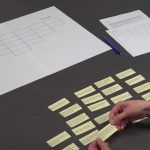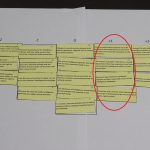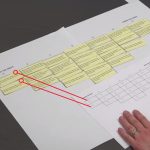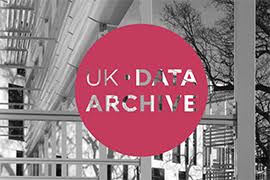Thank you for considering contribution your expertise to our project through our stakeholder interviews. In doing so you are ensuring that we capture a wide variety of possible voices in exploring the deeply varied debates surrounding internet surveillance, issues of privacy and security.
For your convenience, the following sections include all information you will receive in ‘participant information’ sheets and consent form. Links to these documents are also included here.
Please do explore the rest of the site for more information on the wider project, the researchers involved and any outputs as they are published. There is a contact page where you can reach us with any questions or to arrange to take part, should you not already have direct contact with a researcher, or if you wish to speak to others involved.
What is a Q-Sort Interview?
The interview takes about 1.5 hours. It begins with a short set of background questions concerning your education, work and relationship to online surveillance.
Background questions are followed by a practical exercise called Q-sort, in which you will be asked to sort a selection of statements pertaining to contemporary debates on internet surveillance and expanded investigatory powers. These statements have been drawn from policy documents, reports and media articles on the subject and will represent a range of different standpoints.
For the Q-Sort, you will be given the following items: instructions, Q-Sort grid (on A1 size poster), statement cards, small Q-Sort grid and a pen. (See Photo 1)
The first stage is to read the statement cards through and spread them on the table. (Photo 2) Next, you will be asked to sort the statement cards into three piles, those you agree with, those you do not agree with and those you are either neutral about, are unsure on or have mixed feelings. It does not matter how many statements you sort into each pile.
Following this, you will be asked to sort these piles onto a Q-Sort grid, one pile at a time. (Photo 3.) Start with the agree pile, then take the disagree pile, and leave the neutral pile for last. Please inform the researcher after finishing each pile.
The grid has fixed positions for you to place your sorted statements, ranging from most agree to most disagree. Your job is to evaluate the statements in relation to the other statements while placing them on to the grid. Only a certain number of statements are allowed under each heading. Please note, all statements under one heading are considered as equally valued.
(Photo 4 The finished Q-Sort. The column circulated in red is highlighting equally valued statements).
When you have placed all the statements, review the ranking. You can change places of as many statements as you wish. After you have finished your Q-Sort, the researcher copies the ranking onto the small Q-Sort grid using the numbers printed in each statement card. (Photo 5.)
Following the sorting exercise, you will be asked a few questions by the researcher about your choices, [e.g. why certain statements were placed where they were], your thoughts on the statements themselves and your experience of doing the sort. This post-sort interview helps us to better understand your viewpoint.
The interview can be in English, or in Norwegian or Finnish, if you are in Norway or Finland.
These instructions will be reiterated at the interview, and the interviewer will remain in the room to help where needed. You can also see our video on Q-Sort interview in practice. However, the text above describes the sorting process in more detail. The grid, scale and statements shown on the video and as photos on, are made only for illustrating the sorting process. Those are not the final research instruments of our study.
Confidentiality and Your Data
The following sections outline key information regarding how we will ensure your anonymity in taking part in this project, and how we will store and use the data you provide.
All responses will be anonymous. No real names or places of work will be identifiable. Written transcripts will omit any identifying or sensitive information. Demographic information will be kept, but all due care will be taken to ensure inference of identity cannot be made from it. Transcripts can be made available for you to check yourself if you wish.
Interviews in Norwegian and Finnish will be translated by a professional external to the research group. A confidentiality agreement will be signed by the translator.
The ‘sort’ and the interview will be audio recorded for accuracy purposes. This recording will be transcribed and anonymised. The audio recording will then be destroyed.
Analysis of the research data collected will be used as part of the wider web surveillance project outlined at the start. Findings will be reported in academic and policy publications, shared at conferences and disseminated widely in the public domain.
The academic title for this project is:
Taking Surveillance Apart: Accountability and Legitimacy of web surveillance and expanded investigatory powers
Please find more about our data policy in Finnish, Norwegian and English (UK) (Click on the relevant language to view participant information sheets). Even though the general principles of managing the research data are similar in all countries, there are some differences in the documents due to national accustomed practices or legislations. Each country is responsible for collecting and managing the national data and the data is shared between project partners only after careful anonymising procedures. The documents linked are the same ones as you will be provided in advance of any interview with us.
All data collected in this study will, on completion be made available via the UK Data Archive. This is to satisfy a condition of our Funders, Nordforsk in their Standard terms and conditions
The Archive grants access to approved academics and researchers to access and use data to produce further research and inform related reviews. Upload of the aggregate, anonymised data will be managed by the Uk Data Service [Click links for further information]. Finnish and Norwegian held data may also be deposited in appropriate National databases, with links to the UK Data service.








